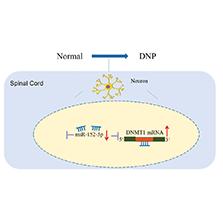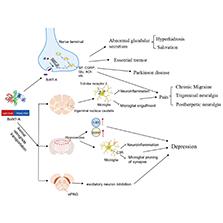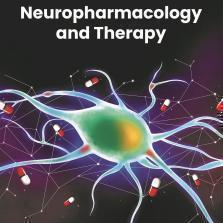The Neurobiology of Pleasure: How Receptors and Neurotransmitters Drive Behavior
#Neurochemistry #AddictionScience #Dopamine #BrainHealth #Neuropharmacology #MentalHealth #Neuroscience #CognitiveTherapies #BrainConnections #RecoveryJourney
The Neurobiology of Pleasure: How Receptors and Neurotransmitters Drive Behavior
#Neurochemistry #AddictionScience #Dopamine #BrainHealth #Neuropharmacology #MentalHealth #Neuroscience #CognitiveTherapies #BrainConnections #RecoveryJourney
'Spinal Cord DNMT1 Contributes to Diabetic Neuropathic Pain Mediated by miR-152-3p Downregulation' - an article in 'Neuropharmacology and Therapy' on #ScienceOpen:
🔎 https://www.scienceopen.com/hosted-document?doi=10.15212/npt-2024-0008
🖇️ #Neuropharmacology #Epigenetics #DiabetesResearch #NeuropathicPain

<p xmlns:xsi="http://www.w3.org/2001/XMLSchema-instance" class="first" dir="auto" id="d22357388e174">Diabetic neuropathic pain (DNP) is a common complication of diabetes, yet there are no safe and effective therapeutic options. Emerging evidence has indicated that DNA methylation mediated by DNA methyltransferases (DNMTs) is associated with neuropathic pain. However, how DNMTs respond to DNP and the underlying mechanism has not been established. In this study a DNP model was created and DNMT1, but not DNMT3a or DNMT3b, was shown to be upregulated in the spinal cords of mice with DNP. Moreover, DNMT1 was predominantly expressed in spinal cord neurons. Knockdown of DNMT1 in neurons improved nociceptive hypersensitivity in mice with DNP. Furthermore, bioinformatics analysis and real-time quantitative PCR results suggested that downregulated miR-152-3p in the spinal cord of mice with DNP may be an upstream DNMT1 molecule. Overexpression of miR-152-3p reduced DNMT1 expression in the spinal cord and alleviated nociceptive hypersensitivity in mice with DNP. Knockdown of miR-152-3p caused an increase in DNMT1 expression in the spinal cord and induced nociceptive hypersensitivity in naive mice. Moreover, knockdown of DNMT1 reversed miR-152-3p knockdown-induced nociceptive hypersensitivity in naive mice. These results suggest that downregulation of miR-152-3p in the spinal cord is involved in the development of DNP by upregulating DNMT1. These data demonstrate a new mechanism underlying the development of DNP and provide a new therapeutic target for DNP. </p>
'Beyond Dystonia: The Therapeutic Benefits of Botulinum Toxin Type A in Neurological Disorders' - a new article in 'Neuropharmacology and Therapy' on #ScienceOpen:
🔎 https://www.scienceopen.com/hosted-document?doi=10.15212/npt-2024-0014
🖇️ #Neuropharmacology #Neurology #BotulinumToxin #NeurologicalDisorders

<p xmlns:xsi="http://www.w3.org/2001/XMLSchema-instance" class="first" dir="auto" id="d34732e145">BoNT type A (BoNT-A) is a neurotoxic protein produced by the anaerobic bacterium Clostridium botulinum. In recent years, BoNT-A has demonstrated substantial efficacy in the management of various diseases, particularly neurological disorders, and has served as a versatile therapeutic agent in modern medicine. This review is aimed at comprehensively examining the application of BoNT-A in various non-dystonia disorders—including hyperhidrosis, salivation, chronic migraine, trigeminal neuralgia, postherpetic neuralgia, primary tremor, depression, and Parkinson’s disease—in the field of neurology. </p>
'Neuropharmacology and Therapy' is a platinum #OpenAccess platform for rapid publication of cutting-edge research in #Neuropharmacology—with a focus on new drug regimens and neurosurgical therapies of nervous system dysfunctions:

<p><em>Neuropharmacology and Therapy </em>provides a <strong>platinum open access</strong>, platform for rapid publication of the latest findings, approaches, and viewpoints related to various topics in neuropharmacology with a focus on regiments and mechanisms of new drugs and neurosurgical therapies of various dysfunctions in the nervous system.</p><p><strong>eISSN </strong>2990-8779</p>
'A Novel Neural Mechanism for #Melatonin Regulation on Non-Rapid Eye Movement #Sleep' - a #Neuropharmacology and Therapy article on #ScienceOpen:
🔗 https://www.scienceopen.com/hosted-document?doi=10.15212/npt-2024-0009
'Neuropharmacology and Therapy' provides a platinum #OpenAccess platform for rapid publication of the latest findings, approaches, and viewpoints related to various topics in #Neuropharmacology:

<p><em>Neuropharmacology and Therapy </em>provides a <strong>platinum open access</strong>, platform for rapid publication of the latest findings, approaches, and viewpoints related to various topics in neuropharmacology with a focus on regiments and mechanisms of new drugs and neurosurgical therapies of various dysfunctions in the nervous system.</p><p><strong>eISSN </strong>2990-8779</p>
The Inner Workings of Your Brain: Neurotransmitters, Receptors, and Mood Regulation
#BrainChemistry #Neurotransmitters #MentalHealth #Neurobiology #MoodBalance #Neuroplasticity #StressResponse #BrainHealth #Psychology #Neuroscience #MentalWellness #BrainFunction #Medication #Neuropharmacology #SelfCare
I'll be at Breaking Convention - https://breakingconvention.co.uk
A multi-disciplinary conference offering the latest ground-breaking research and insights into psychedelics 🍄🌵🌱
17 - 19 April 2025, Exeter UK
Who else is going?
Get in touch if you'll be there and want to meet! I love to chat with new people ✨
#BreakingConvention #BreakingConvention2025 #psychedelics #entheogens #conference #neuropharmacology #ethnobotany #philosophy #history #anthropology #art #archaeology #therapeuticPractice
What Ketamine Does to the Human Brain
https://www.theatlantic.com/health/archive/2025/03/ketamine-effects-elon-musk/681911/
#HackerNews #Ketamine #Brain #Effects #MentalHealth #ScienceNews #Neuropharmacology
Paid Peer Review Opportunities for Top Publishers with Enago!
ENAGO
See the full job description on jobRxiv: https://jobrxiv.org/job/enago-27779-paid-peer-review-opportunities-for-top-publishers-with-enago-2/?feed_id=91242
#journal_editor #medical #neuropharmacology #oncology #peer_reviewer #ScienceJobs #hiring #research
https://jobrxiv.org/job/enago-27779-paid-peer-review-opportunities-for-top-publishers-with-enago-2/?feed_id=91242